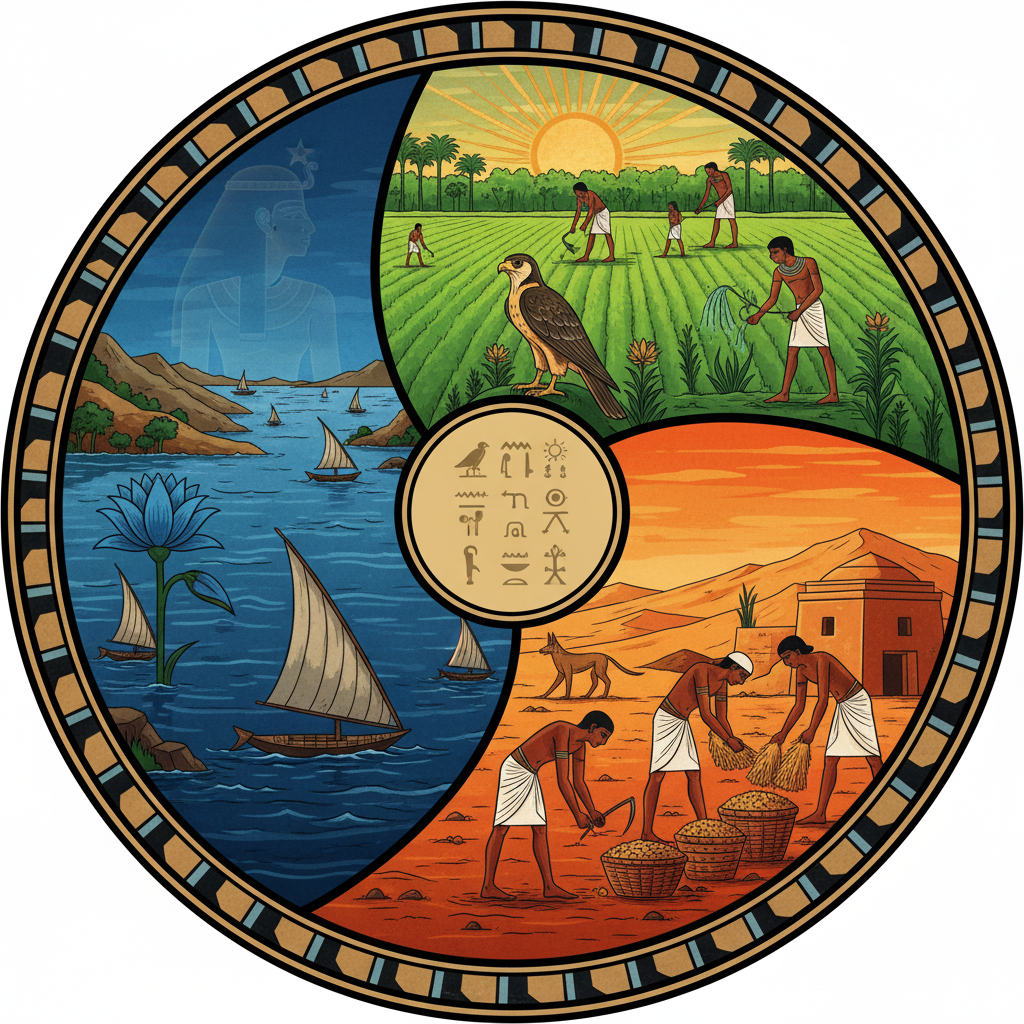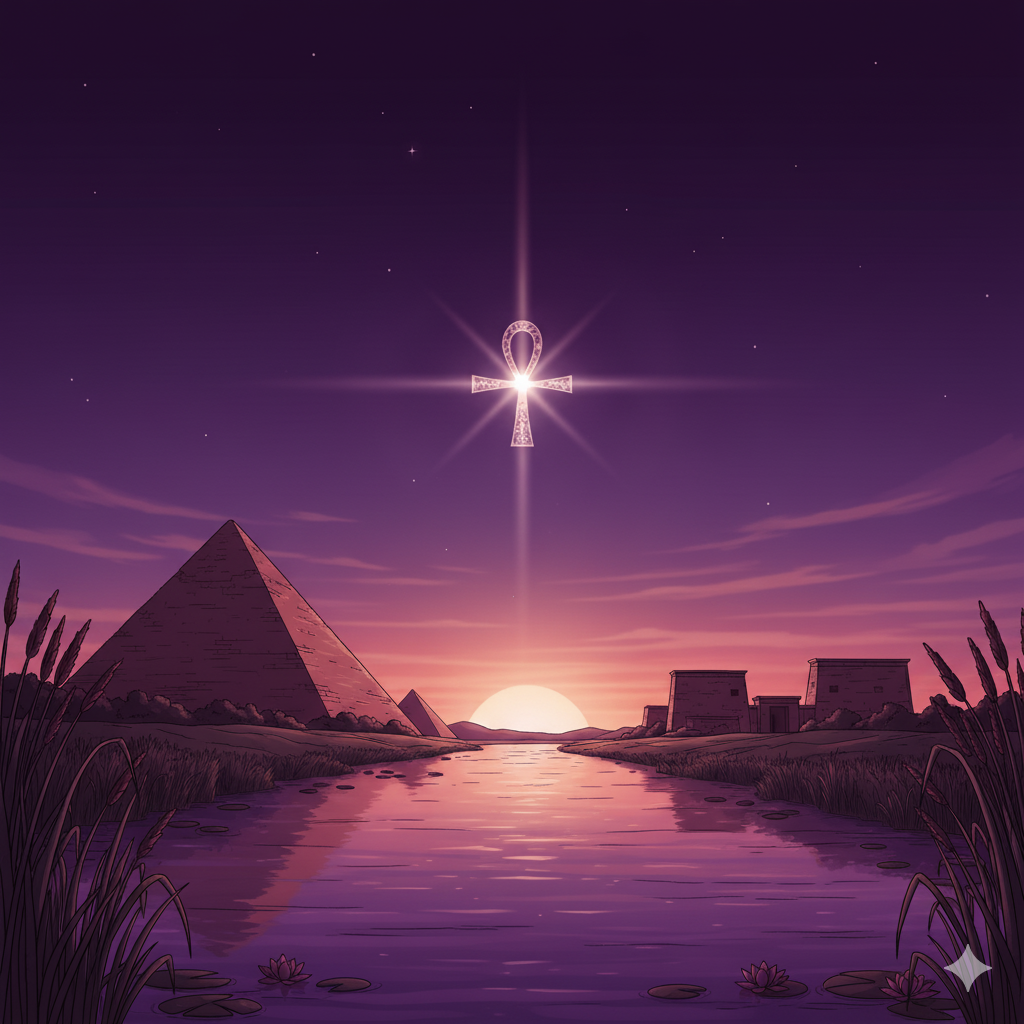Unveiling Time: The Ancient Egyptian Calendar ⏳
The ancient Egyptian calendar stands as one of humanity’s earliest and most enduring intellectual achievements. Far more than a mere record-keeping tool, this sophisticated system was the engine of Egyptian civilization, dictating the rhythm of life, agriculture, religion, and governance. Its genius lay in its simplicity and its pioneering recognition of the 365-day year, a concept that forms the very backbone of our modern Gregorian calendar.
The Structure of the Egyptian Civil Calendar
The Egyptians devised a practical Civil Calendar designed to remain stable and predictable for administrative and agricultural purposes.
The 365-Day Year
Unlike many contemporary cultures that relied solely on inconsistent lunar cycles, the Egyptians adopted a fixed 365-day year. This year was divided logically into two parts:
- 12 Months of 30 Days: The year comprised 12 months, each with a reliable 30 days. This provided a fixed period of 360 days (12 x 30).
- The 3 Seasons: These twelve months were grouped into three distinct seasons, each directly linked to the cycle of the Nile River, the source of all life in Egypt:
| Season (Māori Name) | Duration | Description |
| Akhet (Inundation) | ~July to October | The crucial Flood Season. The Nile overflowed its banks, depositing fertile black silt across the land. This period prevented farming and necessitated major construction and religious focus. |
| Peret (Emergence) | ~November to February | The Growing Season. As the waters receded, crops were sown in the newly fertile soil, and fields were carefully irrigated and tended. |
| Shemu (Harvest) | ~March to June | The Harvest/Dry Season. A time of intense labor, gathering the mature crops under the intense summer heat before the cycle began anew. |

The Five Epagomenal Days (Heriu Renpet)
To complete the 365-day year, the Egyptians added five extra, or intercalary, days at the end of the year, known as Heriu Renpet (“Those upon the Year”).
These days were imbued with religious significance, traditionally considered the birthdays of the five great deities: Osiris, Horus, Seth, Isis, and Nephthys. While essential for balancing the calendar, they were often viewed as unlucky days for ordinary work but were vital periods for major national festivals.
The Lunar Calendar and Sothic Cycle
While the civil calendar kept administration running smoothly, the Egyptians maintained a parallel system to accurately track cosmic and religious events.
The Lunar Calendar
A separate Lunar Calendar existed, based on the cycles of the moon. Since its months were shorter and its length varied, it was primarily used to set the dates for religious festivals and rituals, which often needed to be synchronized with the correct phase of the moon.
The Sothic Cycle (The Rise of Sirius)
The true start of the Egyptian natural year was marked by the heliacal rising of Sirius. Known to the Egyptians as the star Sopdet, Sirius is the brightest star in the night sky. The heliacal rising is the moment the star first becomes visible on the eastern horizon, just before the sun rises.
Crucially, this astronomical event coincided almost perfectly with the annual inundation (flood) of the Nile.
Because the civil calendar had a fixed 365 days but did not include a leap year, it was about a quarter of a day too short each year. This caused the civil new year to drift away from the Sothic rising, leading to the “Wandering Year.” It took approximately 1,460 years for the civil calendar’s start date to cycle completely through the three seasons and realign with the Sothic rising—a period known as the Sothic Cycle or the “Great Year.”
Daily Life and the Calendar
The Egyptian calendar was woven into the fabric of daily life:
- Agricultural Planning: The three seasons (Akhet, Peret, Shemu) provided a clear, reliable schedule for when to stop, plant, and harvest, ensuring the consistent flow of food.
- Religious Festivals: The calendar organized the hundreds of religious festivals, rituals, and temple activities, many of which were tied to the lunar calendar or the five special days.
- Administration: The fixed civil calendar was essential for government functions, including the orderly collection of taxes and the reliable dating of historical records and royal decrees.
Evolution and Legacy
The Egyptian system proved so effective that its core structure continued to be used for millennia.
Ptolemaic Reforms
During the Ptolemaic period (the Greek-ruled era of Egypt), astronomers recognized the civil calendar’s drift. The Decree of Canopus (238 BCE) attempted to introduce a leap day every four years to fix the issue, but the reform was not widely adopted by the Egyptian populace at the time.
Influence on the Julian Calendar
The most profound legacy of the Egyptian system is its adoption by Rome. The Roman general Julius Caesar, upon consulting Egyptian astronomers, adopted the 365-day year structure and institutionalized the concept of a regular leap day every four years. This reformed calendar, known as the Julian Calendar, became the standard for the Western world and served as the direct basis for the Gregorian Calendar we use today.
The ancient Egyptian calendar wasn’t just a way to count days; it was a cosmic and social blueprint that helped build one of the world’s greatest civilizations and ultimately gifted the world the fundamental structure of modern time.

